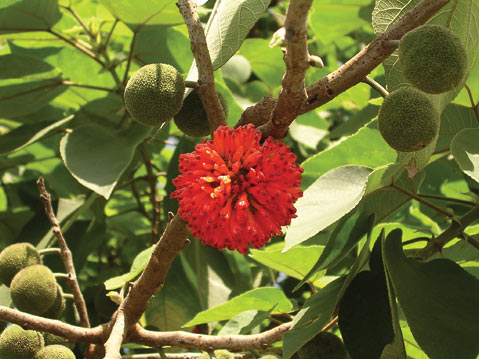Paper Plants
Paper Has Been Created from a Variety of Plants

Supposedly, we are well on the way to a “paperless society” wherein everything from reading materials to legal documents (including digital signatures) will pass only between and among computers and other digital devices without leaving an ink smudge anywhere.
While those uses for paper may be fading out, there are plenty of others that are sure to lag behind. For starters, art (think watercolor painting) and personal hygiene products (on a roll, in a pop-up box, and myriad other unmentionable delivery systems) are probably not exiting the scene soon. The first paper was, however, created for conveying messages and keeping records: in other words, the written word. Carvings in stone tablets, inked animal skins, and even messages impressed into metal were finally supplanted by creating something just for the purpose—paper.
The northern African plant papyrus (Cyperus papyrus) was among the first to receive and preserve those writings, as early as 3,000 BCE. The pithy stems of this giant reed (up to 10 feet in height) were cut and flattened in alternating vertical and horizontal layers and compressed to form one layer. The cellulose of the plant stems made for a flexible and durable writing surface.
As necessity has always been the mother of invention, paper was invented numerous times and created from a variety of plants. The paper mulberry (Broussonetia papyrifera) is in the fantastically varied fig family, which does indeed include mulberries and a host of other botanical misfits. Native to China and Japan, it made its way to Polynesia, where it became the vegetable basis for both paper for art and writing, but also a sort of “cloth” called tapa. The bark of the thin stem is peeled away, and then thin strips are shaved off and pounded to soften the fibers and meld them together with more strips until a large sheet is made.
Another of the botanicals that became a source of fiber to grind, mash, and press into a suitable surface for ink and paint was Tetrapanax papyriferus. Also native to China, the pith of its stems was the source of Chinese rice paper in ancient times. Modern rice paper is made of other fibers, including the paper mulberry.
Very little of the paper in use today is made from these plants, and there are massive industrial plants that press out miles of paper daily for every use from packaging to fine-art photography. Modern papers utilize easily cultivated sources of pulp such as pine trees and cotton, although some papers may still be created from flax (also the source of fibers for linen fabric) or hemp. Experiments with bamboo as a fiber source are also ongoing.
The really fun part is that all of these plants can be grown in gardens here. Papyrus loves water, so it is perfect for ponds and bogs but will also thrive in any other moderately moist situation (fantastic in pots). Paper mulberry (also known as wauke in Hawai‘i) may go deciduous in cooler climes, but the fuzzy, fig-like leaves are nice in the background of a shady garden. Rice paper plant has large, divided leaves that resemble its other aralia relatives and can lend a tropical note to any landscape without breaking the water budget. All are handsome and create a nice connection to man’s earliest forays into preserving the printed word.



